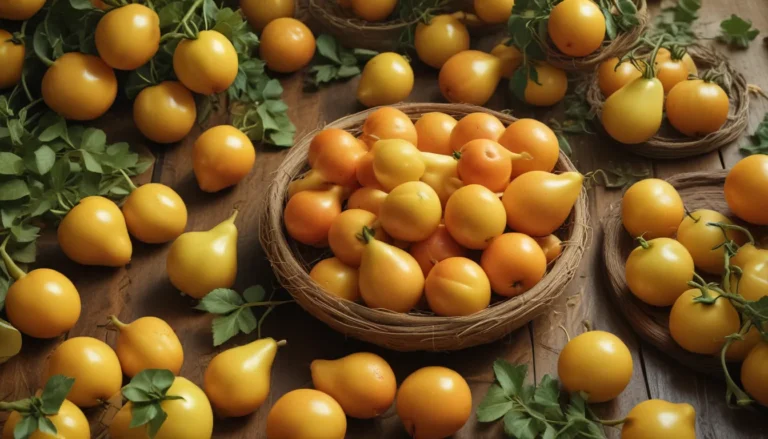Ultimate Guide to Growing and Caring for Bottlebrush Bushes

Exploring the Vibrant World of Callistemon spp.
Bottlebrush plants, with their colorful bristly blooms that grace the garden throughout the summer, are a favorite among gardeners and pollinators alike. Hummingbirds especially can’t resist them!
Whether you prefer a dwarf shrub or a towering tree, there is a bottlebrush variety to suit your needs. With vibrant spikes of red, crimson, white, or yellow flowers that resemble a bottle-cleaning brush, these plants are a delightful addition to any garden.
Let’s dive into the world of bottlebrush bushes and discover how to grow and care for these vibrant plants.
What You’ll Learn
- Cultivation and History
- Propagation
- How to Grow
- Growing Tips
- Pruning and Maintenance
- Species and Cultivars to Select
- Managing Pests and Disease
- Best Uses
- Quick Reference Growing Guide
Cultivation and History of Bottlebrush Bushes
Bottlebrush, with the scientific name Callistemon, belongs to the myrtle family, Myrtaceae. Hailing from Australia, these evergreen flowering shrubs have captured the attention of gardeners worldwide. The first introduction of C. citrinus to Europe in the late 1700s by botanist Joseph Banks sparked the popularity of bottlebrush plants.
Known for their long-lasting flowering season and attracting a variety of pollinators, bottlebrush bushes are a sight to behold. Ranging from three to 15 feet in height, they can also be pruned and trained as trees up to 25 feet tall.
There is ongoing debate among botanists regarding the classification of Callistemon and Melaleuca as separate genera. Despite the merger of most Callistemon species with the Melaleuca genus in the early 2000s, nurseries continue to label these plants as “callistemon.”
Growing Bottlebrush: Propagation Techniques
From Seed:
- Collect ripe woody fruits that have not yet opened.
- Crack open the fruit to reveal tiny seeds.
- Surface sow seeds in moist, well-draining soil in a warm spot.
- Keep soil moist until germination, usually within two weeks.
- Repot seedlings into larger containers after reaching three inches in height.
From Cuttings:
- Take six-inch stem cuttings with multiple pairs of leaves in the summer.
- Plant in a soilless mixture of peat moss and perlite with rooting hormone.
- Water and tent with plastic to retain moisture, and check for root formation in four to six weeks.
- Repot rooted cuttings into individual containers and grow indoors until the following spring.
From Seedlings or Transplanting:
- Harden off seedlings before planting outdoors.
- Dig a hole larger than the root ball and backfill with soil and compost mix.
- Mulch and water well, keeping the base of the plant clear.
- Space multiple shrubs three feet apart for optimal growth.
Growing Tips for Bottlebrush Bushes
- Choose a sunny location receiving at least six to eight hours of sunlight per day.
- Amend soil with compost before planting for improved drainage.
- Water deeply once a week initially, then only during prolonged dry spells.
- Protect from cold snaps and move indoors during winter in Zones 8a or below.
Pruning and Maintenance Techniques
- Shape bottlebrush bushes into shrubs or trees by pruning lower branches as desired.
- Remove suckers and dead/diseased branches for overall health.
- Prune heavily for potted plants to maintain a manageable size.
Bottlebrush Species and Cultivars to Explore
Crimson Bottlebrush:
- C. citrinus – Vibrant red flowers with lemony-scented foliage.
Weeping Bottlebrush:
- C. viminalis – Drooping branches with deep red flowers.
- ‘Little John’ – Compact dwarf shrub with blood-red flowers.
Willow Bottlebrush:
- C. salignus – Creamy white or yellow flowers with willow-like foliage.
Managing Pests and Diseases in Bottlebrush Shrubs
Pests:
- Root-Knot Nematodes – Look for swollen roots and wilted leaves.
- Sawflies – Remove larvae by hand or apply neem oil.
- Scale Insects – Treat with horticultural oil to kill scale.
Diseases:
- Powdery Mildew – Control with organic methods like milk or baking soda.
- Root Rot – Plant in well-draining soil to avoid fungal infection.
- Sooty Mold – Address scale infestations to prevent this fungal disease.
Best Uses of Bottlebrush Bushes
- Ideal for hedges and borders with dense foliage and colorful blooms.
- Perfect for container planting as a focal point on decks or patios.
- Adds a pleasant aroma to cut flower arrangements with lemony-scented foliage.
Quick Reference Growing Guide
- Plant Type: Evergreen flowering ornamental shrub
- Flower/Foliage Color: Red, white, yellow/blue-green, green, silver
- Native to: Australia
- Maintenance: Low
- Hardiness (USDA Zone): 8-11
- Tolerance: Heat, drought
- Bloom Time/Season: Spring and summer
- Soil Type: Loam
- Exposure: Full sun
- Soil pH: 5.6-7.5
- Spacing: 3 feet
- Soil Drainage: Well-draining
- Height: Up to 25 feet
- Spread: Up to 15 feet
- Water Needs: Low
- Attracts: Hummingbirds, butterflies, bees, wasps
Closing Thoughts
Incorporating bottlebrush bushes into your landscape can elevate its visual appeal and attract a myriad of pollinators. These low-maintenance plants are a delight to grow, with vibrant blooms that continue all summer long.
Have you added bottlebrush to your garden? Share your tips and experiences in the comments below! Let these charming shrubs dazzle your garden with their elegance and beauty.





